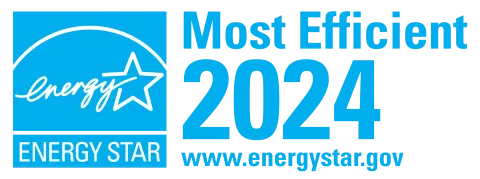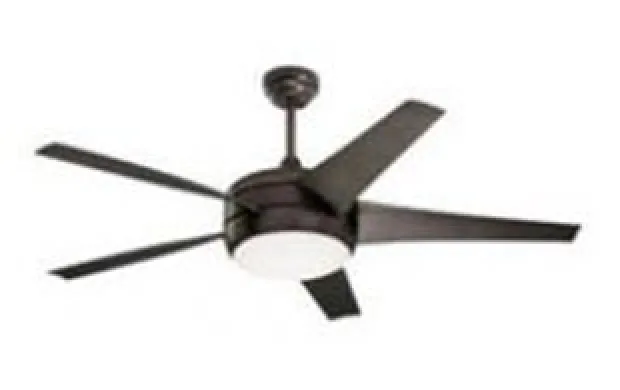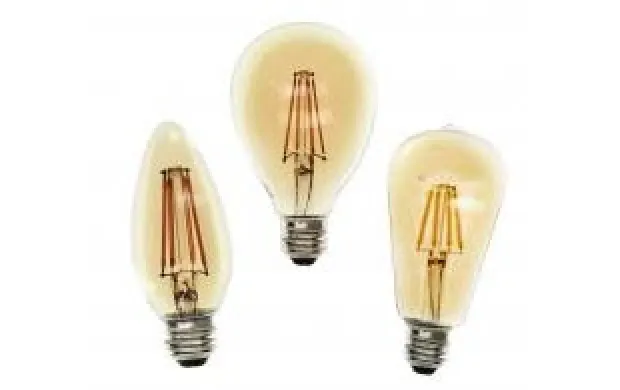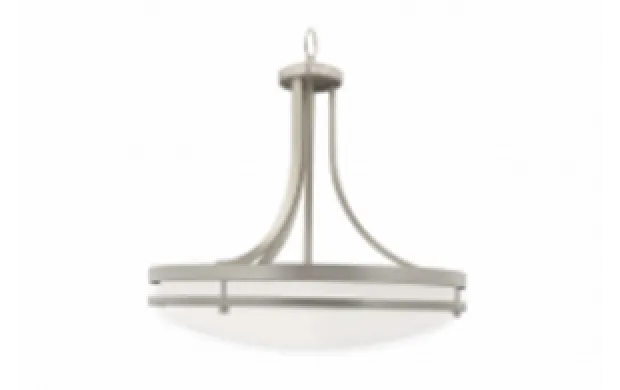Dehumidifiers
For PartnersWhy ENERGY STAR?
Choosing an ENERGY STAR dehumidifier can deliver savings on energy bills without sacrificing performance, features, and comfort, while protecting the environment by reducing greenhouse gas emissions. A dehumidifier that has earned the ENERGY STAR label uses more efficient refrigeration coils, compressors, and fans to remove the same amount of moisture as a similarly sized conventional unit but uses 13% less energy. In fact, the annual energy saved by one of these models could power your ENERGY STAR certified refrigerator for nearly two months.
ENERGY STAR certified models are available for both portable and whole home dehumidifiers. Portable room dehumidifiers are typically used to dehumidify a single room or space and can be easily moved where they are needed. Whole-home dehumidifiers are typically installed to use your home's air ducts to dehumidify one or more rooms and are often permanent.

Rebate Finder
Our partners sponsor rebates on certified products.
What should I look for when buying a dehumidifier?
Certified models are available from all major retailers and brand names including Black+Decker, Danby, Frigidaire, GE, Hisense, and Honeywell. In addition to energy performance, there are many other important operating and convenience features to consider when shopping for dehumidifiers.
Capacity
The dehumidifier “size” or capacity of the unit is usually measured in pints per 24 hours. The capacity you need depends on two factors: the size of the space that needs to be dehumidified and the conditions that exist in the space without dehumidification. If you are replacing an existing dehumidifier, you can judge by how much water you empty each day. Remember, it’s better to oversize than undersize! Use the charts below to estimate the minimum capacity for your portable dehumidifier. Consult Buying and Installing a Whole-Home Dehumidifier for more information on sizing a whole-home dehumidifier. If you’ve shopped for a dehumidifier before, you may notice that the capacity options have changed. Learn more about why capacity ratings are changing here.
| Condition without Dehumidification | Recommended Capacity Range, pints per day | |
|---|---|---|
Small-medium room (<2,000 sq. ft.) | Large room (>2,000 sq. ft.) | |
| Slightly to Moderately Damp: space feels damp and has musty odor that may be intermittent. 50-75% relative humidity. | 20-30 | 30+ |
| Very Damp: space consistently feels and smells damp. Damp spots appear on walls and floors. 75-90% relative humidity. | 25-40 | 40+ |
| Wet: Walls or floor sweat, or seepage is present. High-load conditions such as laundry drying may be present. 90-100% relative humidity. | 30-50 | 50+ |
Water Removal Options
Most portable dehumidifiers use a removable plastic bucket and warning lights to indicate when the bucket is full and needs to be emptied. There is typically an automatic shutoff when the bucket is full, so you won’t have to worry about the bucket overflowing.
Some dehumidifiers come with a fitting that allows you to hook a hose directly to the bucket, which can then be directed into a floor drain or sump pump, so there is no need to empty it. Most whole-home dehumidifiers are only equipped with a drain, which should be routed to a floor drain or condensate pump during installation by an HVAC professional.
Operating Temperature
If the space being dehumidified has temperatures that typically fall below 65 degrees (F), you may want to consider buying a product that is specified for use at lower temperatures.
Frost can form on the condensing coils if the air temperature drops below 65 degrees, and may negatively affect the performance of the product by causing the compressor to cycle on and off repeatedly without removing moisture from the air. If this happens, the unit should be switched off and allowed to defrost before it is turned back on. Some dehumidifiers come with an anti-frost sensor, which will automatically turn the unit off if the air temperature drops below a certain point.
Models qualifying for the ENERGY STAR label are available that are rated for use at temperatures as low as 42 degrees.
Integrated Energy Factor
The energy efficiency of dehumidifiers is measured by its integrated energy factor, in liters of water removed per kilowatt-hour (kWh) of energy consumed or L/kWh. In general, a higher integrated energy factor means a more efficient dehumidifier. Integrated energy factor is different than energy factor, which was the efficiency metric used for dehumidifiers prior to 2019. Learn more information of the difference between the two metrics here.
ENERGY STAR Most Efficient
Products that are recognized as ENERGY STAR Most Efficient deliver cutting edge energy efficiency along with the latest in technological innovation. They represent the very best for energy savings and environmental protection. Find Most Efficient dehumidifiers here.
Buying and Installing a Whole-Home Dehumidifier
If you live in a humid climate and have central air conditioning, an ENERGY STAR certified whole-home dehumidifier may be the right choice for you. Whole-home dehumidifiers, when sized and installed properly, can save you energy, increase indoor comfort, and prevent mildew and bacterial growth, thereby increasing the quality of the air you breathe. These systems can be expensive, but they carry significant benefits for relatively well sealed homes with central air systems that see humidity readings above 55% consistently throughout the house. Even though a system that has earned the ENERGY STAR label may be more expensive up front, the cost difference will be paid back over time through lower energy bills.
If you’ve decided that a new ENERGY STAR certified whole-home dehumidifier is right for your home, learn how to hire a contractor that will help you size and correctly install your unit.
As with heating and cooling, ENERGY STAR home sealing and duct sealing will improve the performance and decrease the energy use of your whole-home dehumidifier. To prevent future problems and maintain performance, consider regular maintenance of your dehumidification system as well as your heating and cooling system.
Be sure to look for the ENERGY STAR when shopping for dehumidifiers
Current Specification Effective Date: October 31, 2019
Dehumidifiers originally qualified for the ENERGY STAR label in January, 2001. Dehumidifiers that have earned the ENERGY STAR are 13% more efficient than non-certified models.
Best Practices
Placement
Most portable dehumidifiers have top-mounted air discharge and can be placed against walls, but if you do not have top-mounted discharge, make sure the dehumidifier is located away from walls and furniture, so that air can circulate freely around the unit. This will result in better operation of the product.
Doors and windows to the space being dehumidified should be closed while the unit is running. This will ensure that the space is dehumidified as efficiently as possible.
Locate away from sources of dust and dirt (like woodworking equipment), which can clog coils and grills.
Observe all manufacturer warnings regarding electrical safety. Never set up water drainage or disposal near electrical circuits or devices. Make sure the dehumidifier is connected to a properly grounded outlet. Keep drain hoses away from electrical cords and connections.
If you are planning to use a hose to drain the dehumidifier’s water bucket, make sure the unit is located near enough to the floor drain or sump to avoid the need for a long and unwieldy hose. Don’t create a tripping hazard!
Do not be alarmed if the air temperature directly around the unit is warmer than in surrounding areas. As a dehumidifier removes moisture from the air, it slightly warms the space around it.
Relative Humidity (RH) and Humidistats
Humidity, the amount of moisture or water vapor in the air, is most often talked about in terms of Relative Humidity (RH). RH is the amount of water vapor present in the air compared to the greatest amount of water vapor the air can hold at that temperature. The optimum RH level for a building is generally considered to be between 30% and 50%. Anything above this range may promote mold growth. (In colder climates, during the heating season, humidity levels should be in the range of 30% to 40% RH to prevent window condensation.)
All ENERGY STAR dehumidifiers include a built-in humidistat, a device that allows you to set the desired RH level that you would like for the room. Once the room reaches the desired RH level, the dehumidifier will cycle on and off automatically to maintain the level.
If your dehumidifier does not have a built-in humidistat or has a humidistat that does not show RH levels, consider purchasing a hygrometer (a gauge that measures relative humidity) separately and hang it near the dehumidifier. The hygrometer will measure RH levels and enable you to monitor when to turn the dehumidifier on and off.
Other Ways to Reduce Humidity in the Home
Reducing sources of moisture can reduce your need for dehumidification.
- Improving the drainage around the foundation of your home may result in decreased humidity in your basement. Some ways to improve drainage are:
- Extend downspouts from your gutters away from the foundation of your home
- Keep gutters and downspouts clear and open
- Ensure that the soil slopes away from your foundation to avoid pooling of water around your home
- Avoid over-watering of foundation plantings
- Ensure that clothes dryers are properly vented to the outdoors. If you do not use a clothes dryer, dry your clothes outdoors as opposed to hanging them inside for drying.
- Use vent fans in bathrooms and kitchens to remove humidity at the source.
- Repair leaking outdoor faucets. Not only will this help reduce humidity, but it will also save you money on your water bills.
- If your home uses central air conditioning, consider installing an A/C vent in the humid space in your home and take advantage of the dehumidifying capabilities of your A/C system. This will also help with air circulation, improving airflow between humid parts of your home and drier parts.

Your go-to resource for the latest advice from ENERGY STAR experts on saving energy at home and work.
RELATED PRODUCTS
Join Mailing List
Sign up for newsletters from ENERGY STAR to help you save money and energy at home.





